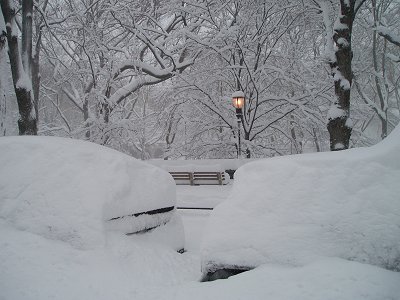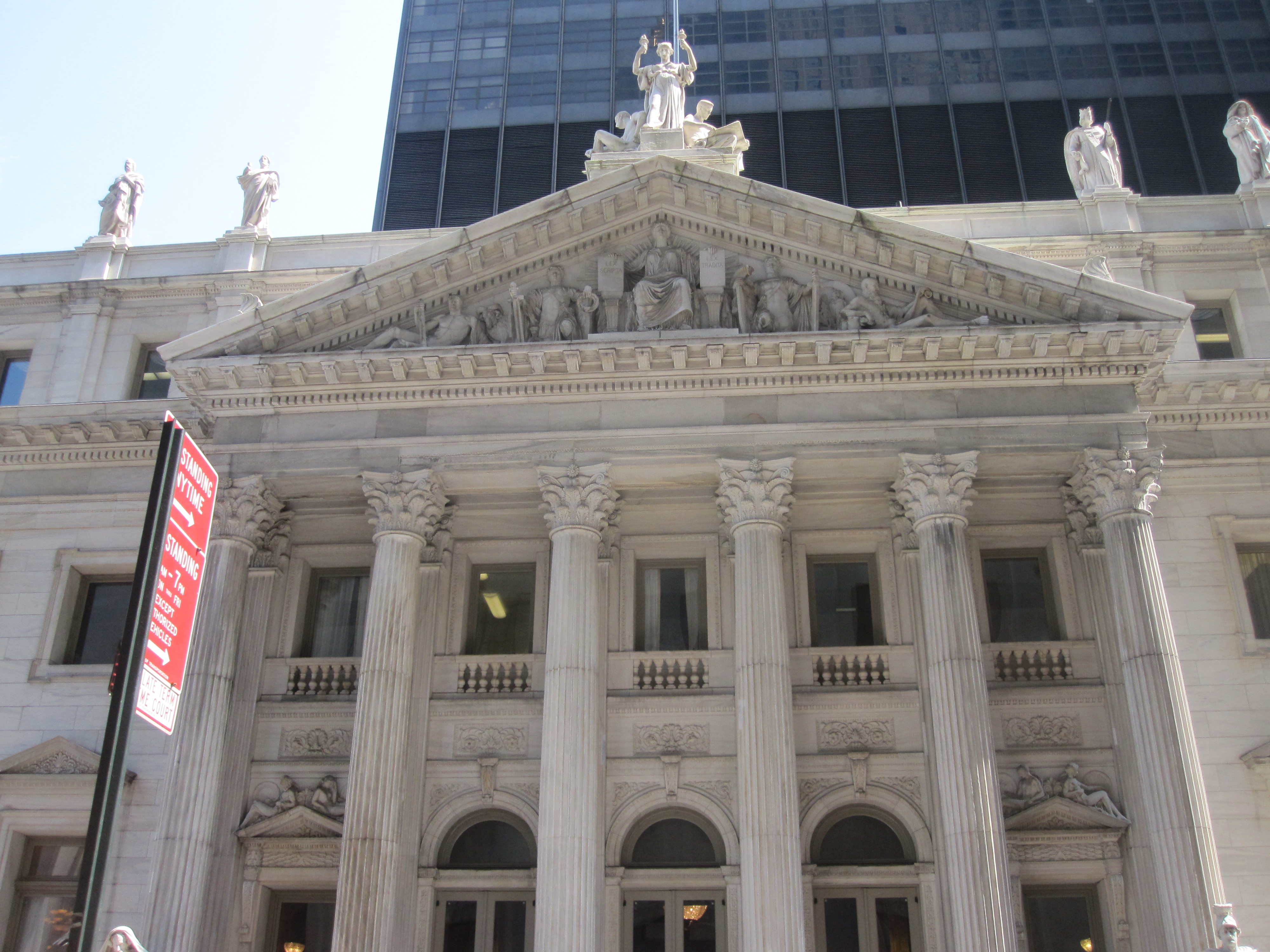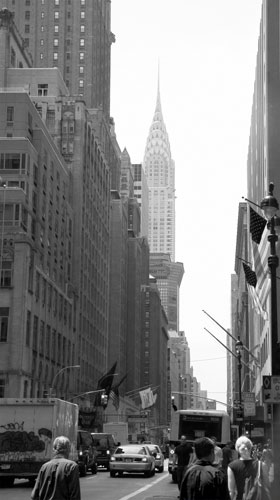|
Manhattan Address Algorithm
The Manhattan address algorithm refers to the formulas used to estimate the closest east–west cross street for building numbers on north–south avenues in the New York City borough of Manhattan. Algorithm To find the approximate number of the closest cross street, divide the building number by a divisor (generally 20) and add (or subtract) the "tricky number" from the table below: See also * List of numbered streets in Manhattan * Numbered street A numbered street is a street whose name is an ordinal number, as in ''Second Street'' or ''Tenth Avenue''. Such forms are among the most common street names in North America, but also exist in other parts of the world, especially in Colombia, w ... References {{Authority control ! Algorithms ... [...More Info...] [...Related Items...] OR: [Wikipedia] [Google] [Baidu] |
Building Number
House numbering is the system of giving a unique number to each building in a street or area, with the intention of making it easier to locate a particular building. The house number is often part of a postal address. The term describes the number of any building (residential or commercial) with a mailbox, or even a vacant lot. House numbering schemes vary by location, and in many cases even within cities. In some areas of the world, including many remote areas, houses are named but are not assigned numbers. In many countries, the house number ''follows'' the name of the street; but in anglophone and francophone countries, the house number normally ''precedes'' the name of the street. History A house numbering scheme was present in Pont Notre-Dame in Paris in 1512. However, the purpose of the numbering was generally to determine the distribution of property ownership in the city, rather than for the purpose of organization. In the 18th century the first street numbering sch ... [...More Info...] [...Related Items...] OR: [Wikipedia] [Google] [Baidu] |
Eleventh Avenue (Manhattan)
Eleventh Avenue is a north–south thoroughfare on the far West Side of the borough of Manhattan in New York City, located near the Hudson River. Eleventh Avenue originates in the Meatpacking District in the Greenwich Village and West Village neighborhoods at Gansevoort Street, where Eleventh Avenue, Tenth Avenue, and West Street intersect. It is considered part of the West Side Highway between 22nd and Gansevoort Streets. Between 59th and 107th Streets, the avenue is known as West End Avenue. Both West End Avenue and Eleventh Avenue are considered to be part of the same road. Description Between Gansevoort Street and West 22nd Street, Eleventh Avenue is part of the West Side Highway, a very wide expressway. At a split with Twelfth Avenue/West Side Highway at West 22nd Street, Eleventh Avenue continues as a standard-width avenue. Following the split, Eleventh Avenue is two-way traffic for access to 23rd Street, as well as for 24th Street to access Chelsea Piers. North ... [...More Info...] [...Related Items...] OR: [Wikipedia] [Google] [Baidu] |
Riverside Drive (Manhattan)
Riverside Drive is a scenic north–south thoroughfare in the New York City borough of Manhattan. The road runs on the Upper West Side of Manhattan, generally paralleling the Hudson River and Riverside Park between 72nd Street and the vicinity of the George Washington Bridge at 181st Street. North of 96th Street, Riverside Drive is a wide divided boulevard. At several locations, a serpentine local street diverges from the main road, providing access to the residential buildings. Some of the city's most coveted addresses are located along its route. History Development The of land in the original park between 72nd to 125th Streets were originally inhabited by the Lenape people, but by the 18th century were used for farms by the descendants of European colonists. In 1846, the Hudson River Railroad (later the West Side Line and Hudson Line) was built along the waterfront, connecting New York City to Albany. In 1865, Central Park commissioner William R. Martin put forth ... [...More Info...] [...Related Items...] OR: [Wikipedia] [Google] [Baidu] |
Pleasant Avenue
Pleasant Avenue is a north-south street in the East Harlem neighborhood of the New York City borough of Manhattan. It begins at E. 114th Street and ends at E. 120th Street. The street was the northernmost section of Avenue A, which stretched from Alphabet City northward, and was added to the grid wherever space allowed between First Avenue and the East River. This stretch was renamed "Pleasant Avenue" in 1879. Unlike York Avenue, however, the addresses on Pleasant Avenue are not continuous with that on Avenue A (which would be in the 2000-series if they were continuous). Pleasant Avenue is one of the last remaining streets in Italian Harlem, which existed in the eastern part of Harlem from the late 1890s to the 1970s. The neighborhood shrunk over the years, and the small remaining Italian population resides on Pleasant Avenue. The street is the site of one of the few remaining Italian restaurants in the area, Rao's, at 114th Street. The street had largely lost its Italian chara ... [...More Info...] [...Related Items...] OR: [Wikipedia] [Google] [Baidu] |
Manhattan Avenue (Manhattan)
__NOTOC__ Manhattan Avenue is a street in the Manhattan Valley neighborhood of Manhattan in New York City, extending from 100th Street to 124th Street. Not included in the original Commissioners' Plan of 1811, it is parallel to Columbus Avenue to the west and Central Park West/Frederick Douglass Boulevard to the east. The avenue saw its first buildings in 1885, a group of row houses on its western side. These buildings were brick with stone and terra-cotta trim. There are two historic districts on this avenue. Manhattan Avenue between West 120th and 123rd Streets was designated a National Historic District in 1992. The Manhattan Avenue–West 120th–123rd Streets Historic District lies on the western edge of Central Harlem. It is composed of 113 contributing brownstone and brick row houses on four short blocks between 120th and 123rd streets bounded by Morningside and Manhattan Avenues. Additionally, a Manhattan Avenue Historic District between West 105th & West 106th St ... [...More Info...] [...Related Items...] OR: [Wikipedia] [Google] [Baidu] |
Madison Avenue
Madison Avenue is a north-south avenue in the borough of Manhattan in New York City, United States, that carries northbound one-way traffic. It runs from Madison Square (at 23rd Street) to meet the southbound Harlem River Drive at 142nd Street. In doing so, it passes through Midtown, the Upper East Side (including Carnegie Hill), East Harlem, and Harlem. It is named after and arises from Madison Square, which is itself named after James Madison, the fourth President of the United States. Madison Avenue was not part of the original Manhattan street grid established in the Commissioners' Plan of 1811, and was carved between Park Avenue (formerly Fourth) and Fifth Avenue in 1836, due to the effort of lawyer and real estate developer Samuel B. Ruggles, who had previously purchased and developed New York's Gramercy Park in 1831, and convinced the authorities to create Lexington Avenue and Irving Place between Fourth Avenue (now Park Avenue South) and Third Avenue in order to s ... [...More Info...] [...Related Items...] OR: [Wikipedia] [Google] [Baidu] |
Lexington Avenue
Lexington Avenue, often colloquially abbreviated as "Lex", is an avenue on the East Side of the borough of Manhattan in New York City that carries southbound one-way traffic from East 131st Street to Gramercy Park at East 21st Street. Along its , 110-block route, Lexington Avenue runs through Harlem, Carnegie Hill, the Upper East Side, Midtown, and Murray Hill to a point of origin that is centered on Gramercy Park. South of Gramercy Park, the axis continues as Irving Place from 20th Street to East 14th Street. Lexington Avenue was not one of the streets included in the Commissioners' Plan of 1811 street grid, so the addresses for cross streets do not start at an even hundred number, as they do with avenues that were originally part of the plan. History Both Lexington Avenue and Irving Place began in 1832 when Samuel Ruggles, a lawyer and real-estate developer, petitioned the New York State Legislature to approve the creation of a new north–south avenue between the exist ... [...More Info...] [...Related Items...] OR: [Wikipedia] [Google] [Baidu] |
Lenox Avenue
Lenox Avenue – also named Malcolm X Boulevard; both names are officially recognized – is the primary north–south route through Harlem in the upper portion of the New York City borough of Manhattan. This two-way street runs from Farmers' Gate at Central Park North ( 110th Street) to 147th Street. Its traffic is figuratively described as "Harlem's heartbeat" by Langston Hughes in his poem ''Juke Box Love Song''. The IRT Lenox Avenue Line runs under the entire length of the street, serving the New York City Subway's . From 119th Street to 123rd Street, Lenox Avenue is part of the Mount Morris Park Historic District, designated by the New York City Landmarks Preservation Commission in 1971. History Originally a part of Sixth Avenue, the segment north of Central Park was renamed in late 1887 for philanthropist James Lenox. In 1987, it was co-named Malcolm X Boulevard, in honor of the slain civil rights leader. The avenue was the heart of Harlem during the Harlem ... [...More Info...] [...Related Items...] OR: [Wikipedia] [Google] [Baidu] |
Fort Washington Avenue
Fort Washington Avenue is a major north-south street in the Washington Heights neighborhood of Manhattan. It runs from Fort Tryon Park to 159th Street, where it intersects with Broadway. It goes past Bennett Park, the highest natural point in Manhattan. Famous residents of Fort Washington Avenue include Drs. Henry Kissinger and Ruth Westheimer, TV's "Doctor Ruth". Transportation connections The IND Eighth Avenue Line of the New York City Subway The New York City Subway is a rapid transit system owned by the government of New York City and leased to the New York City Transit Authority, an affiliate agency of the state-run Metropolitan Transportation Authority (MTA). Opened on October 2 ... () runs underneath Fort Washington Avenue, stopping at the 175th Street, 181st Street, and 190th Street stations. The avenue is served by the buses. Streets in Manhattan Washington Heights, Manhattan {{NYC-road-stub ... [...More Info...] [...Related Items...] OR: [Wikipedia] [Google] [Baidu] |
East End Avenue
Avenue B is a north–south avenue located in the Alphabet City area of the East Village neighborhood of Manhattan, New York City, east of Avenue A and west of Avenue C. It runs from Houston Street to 14th Street, where it continues into a loop road in Stuyvesant Town, to be connected with Avenue A. Below Houston Street, Avenue B continues as Clinton Street to South Street. It is the eastern border of Tompkins Square Park. History The street was created by the Commissioners' Plan of 1811 as one of 16 north-south streets specified as in width, including 12 numbered avenues and four designated by letter located east of First Avenue. In 1824, prior to any construction, its width was reduced to , the standard for cross-streets, by taking from the east side. The city reasoned that the lettered avenues were "incapable of use as thoroughfares to and from the City" and could not "be considered as avenues in the proper Sense of the term." East End Avenue On the Upper East Side, ... [...More Info...] [...Related Items...] OR: [Wikipedia] [Google] [Baidu] |
Central Park West
Eighth Avenue is a major north–south avenue on the west side of Manhattan in New York City, carrying northbound traffic below 59th Street. It is one of the original avenues of the Commissioners' Plan of 1811 to run the length of Manhattan, though today the name changes twice. At 59th Street/Columbus Circle it becomes Central Park West, where it forms the western boundary of Central Park. North of 110th Street/Frederick Douglass Circle it is known as Frederick Douglass Boulevard before merging onto Harlem River Drive north of 155th Street. Description Eighth Avenue begins in the West Village neighborhood at Abingdon Square (where Hudson Street becomes Eighth Avenue at an intersection with Bleecker Street) and runs north for 44 blocks through Chelsea, the Garment District, Hell's Kitchen's east end, Midtown and the Broadway theater district in the eponymous neighborhood, before it finally enters Columbus Circle at 59th Street and becomes Central Park West. North of Fre ... [...More Info...] [...Related Items...] OR: [Wikipedia] [Google] [Baidu] |
Broadway (Manhattan)
Broadway () is a road in the U.S. state of New York (state), New York. Broadway runs from State Street (Manhattan), State Street at Bowling Green (New York City), Bowling Green for through the Boroughs of New York City, borough of Manhattan and through the Bronx, exiting north from New York City to run an additional through the Westchester County, New York, Westchester County municipalities of Yonkers, New York, Yonkers, Hastings-on-Hudson, New York, Hastings-On-Hudson, Dobbs Ferry, New York, Dobbs Ferry, Irvington, New York, Irvington, and Tarrytown, New York, Tarrytown, and terminating north of Sleepy Hollow, New York, Sleepy Hollow.There are four other streets named "Broadway" in New York City's remaining three boroughs: one each in Brooklyn (Broadway (Brooklyn), see main article) and Staten Island, and two in Queens (one running from Astoria, Queens, Astoria to Elmhurst, Queens, Elmhurst, and the other in Hamilton Beach, Queens, Hamilton Beach). Each borough therefore has ... [...More Info...] [...Related Items...] OR: [Wikipedia] [Google] [Baidu] |
%2C_numéro_56%2C_porte_02.jpg)
.jpg)





